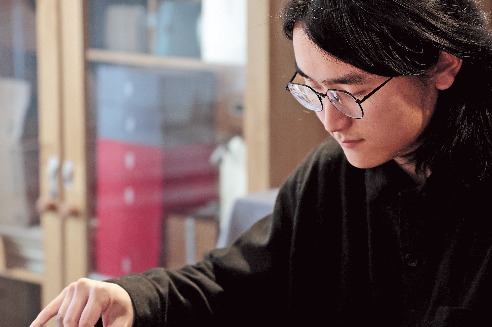Lunar glass makes moon building program feasible


Chinese scientists have an ambitious plan — they want to build permanent structures on the moon using lunar materials, and a recent finding has shown that this idea is feasible.
According to a new study published in National Science Review, a Chinese science journal, the nation's scientists have identified natural glass fibers for the first time in lunar samples retrieved by the Chang'e 5 robotic mission.
The analysis of these natural glass fibers has indicated that lunar soil has good properties in terms of forming and molding glass material, "which confirms the possibility of manufacturing glass construction materials on the lunar surface", said Shen Laiquan, a researcher at the Chinese Academy of Sciences' Institute of Physics, which led the study.
Last month, Wu Weiren, an academician of the Chinese Academy of Engineering and a leading scientist at the China National Space Administration, said Chinese scientists plan to use 3D printing technology to turn lunar soil into construction materials and then use them to build science outposts on the moon.
According to researchers participating in the new study, glass is an important component of lunar soil. It was produced by various kinds of non-equilibrium processes including volcanic activity, meteorite bombardment and solar wind irradiation.
"These drastic processes dominate the formation and evolution of the moon, and our understanding of the moon strongly relies on studies of these processes. As ubiquitous products of lunar non-equilibrium processes, glass can remain stable for billions of years," the researchers wrote.
"This glass, with different origins, can therefore record crucial information with regard to its formation processes over geological time scales, and provide insights into many fundamental questions about the moon involving the duration of volcanism, the bombardment history of the solar system, the origins of lunar water and the moon's past magnetism," they wrote.
Zhao Rui, another researcher at the Chinese Academy of Sciences' Institute of Physics, said that the glass substances recorded various types of meteorite impacts. Analyzing the impact-generated glass can help scientists calculate the power of these impacts, and thus improve research on the formation and evolution of lunar soil.
One of the world's most notable space activities in 2020, the 23-day Chang'e 5 robotic mission was China's first lunar sample-returning mission and one of its most sophisticated and challenging space endeavors. The landmark mission brought 1,731 grams of rocks and soil back to Earth on Dec 17, 2020, presenting the first lunar substances to scientists since the Apollo era.
Before Chang'e 5, China had deployed two landing craft and two rovers on the moon. Yutu 2 of the Chang'e 4 mission has become the longest-working lunar rover of all time and continues to send back data and images.
- Last 15 hikers rescued from Qomolangma snowstorm
- The guardians
- Domestic tourism sees a boom during holiday period
- Xi to deliver keynote speech at opening ceremony of the Global Leaders' Meeting on Women
- Jilin farmers harvest golden rice in autumn fields
- China sees 16.34m cross-border trips during eight-day holiday





































